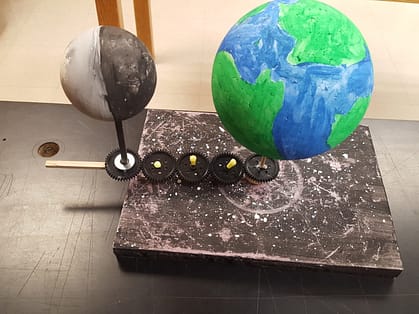An Engineering Challenge
This year I put together an engineering design project for my Regents Earth Science students. The students were broken into groups and each group was assigned a question regarding a key concept in astronomy. The group would have to work together to do research to answer the question that they were given.

The Theme: We have been commissioned by a local science center with putting together an interactive astronomy exhibit for elementary students. The students will learn key astronomy concepts through a series of interactive models.
The Questions: Each group was assigned one of these questions.
1.) How does the solar intensity change over the course of the year?
2.) What causes the phases of the Moon?
3.) What are Kepler’s laws of planetary motion?
4.) How can we use Doppler shifts to determine the motion of stars?
5.) How does the process of nuclear fusion work in the Sun?
The Prompts: Students had to address these three prompts for their question.
1.) What do we need to know to answer this question?
2.) What do we already know?
3.) How do we know?

These prompts were fluid. As students conducted their research, topics moved from the first prompt to the second prompt. Research also produced new unknowns that were added to the first prompt.

Once they knew all that they thought they needed to know, they were to design a model that would teach this concept to fourth graders. It had to be something that the elementary students could manipulate and learn from without outside assistance. Some groups had to work through multiple iterations before they had designed as successful model. Excitement was high when they did come up with a model that worked!

“I didn’t think this was going to work. For the first time in my life I actually like science!” – An exclamation by one of my 10th graders after his group’s model worked as planned.

Modeling how solar intensity varies over the course of the year 
Nuclear fusion model 
Doppler effect model
Pages: 12
